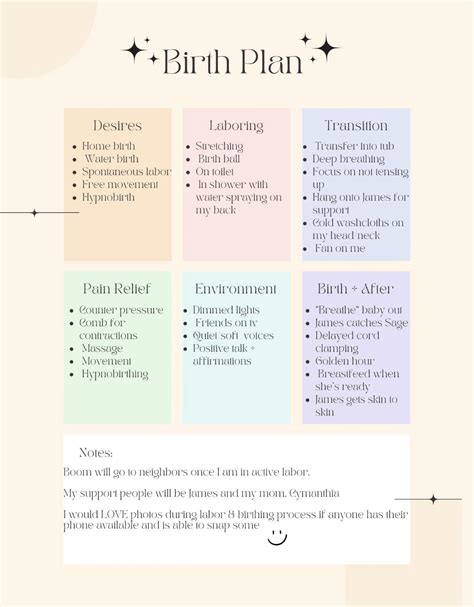Eating a healthy, balanced diet is essential for maintaining overall well-being, but with so many conflicting nutrition tips and trends, it can be overwhelming to know where to start. The key to a successful meal plan is finding a balance that works for you and your lifestyle, rather than following a strict diet or restriction. By focusing on whole, nutrient-dense foods and being mindful of your eating habits, you can develop a healthier relationship with food and improve your overall health.
Understanding the Basics of Nutrition
Before diving into meal planning, it’s essential to understand the basics of nutrition. A healthy diet should include a variety of foods from all food groups, including:
- Fruits and Vegetables: Aim for at least 5 servings a day, including a mix of dark leafy greens, vibrant colors, and crunchy textures.
- Protein: Include a source of protein at each meal, such as lean meats, fish, eggs, dairy, or plant-based options like beans, lentils, and tofu.
- Whole Grains: Choose whole, unprocessed grains like brown rice, quinoa, whole wheat bread, and whole grain pasta.
- Healthy Fats: Nuts, seeds, avocados, and olive oil are all great sources of healthy fats.
- Dairy or Calcium-Fortified Alternatives: Include a source of calcium at each meal, such as milk, cheese, yogurt, or fortified plant-based milk.
Meal Planning Made Easy
Meal planning can seem daunting, but it doesn’t have to be. Here are some simple tips to get you started:
- Plan Your Meals Around a Protein Source: Choose a protein source, such as chicken, fish, or tofu, and build your meal around it.
- Keep it Simple: Don’t feel like you need to create complicated meals. Simple, one-pot dishes like stir-fries, soups, and salads can be just as nutritious and delicious.
- Shop Your Pantry First: Before heading to the grocery store, take stock of what you already have in your pantry, fridge, and freezer. Plan meals around what you already have to reduce food waste and save money.
- Cook in Bulk: Cooking large batches of food, such as grains, beans, and proteins, can save time and money. Use leftovers to create new meals or freeze for later.
Sample Meal Ideas
Here are some sample meal ideas to get you started:
- Breakfast: Overnight oats with fruit and nuts, scrambled eggs with whole grain toast, or Greek yogurt with berries and honey.
- Lunch: Grilled chicken salad with mixed greens, whole grain pita stuffed with hummus, cucumber, and tomato, or lentil soup with whole grain bread.
- Dinner: Grilled salmon with roasted vegetables and quinoa, stir-fry with tofu, brown rice, and mixed vegetables, or chicken and vegetable kebabs with quinoa and a side salad.
Staying Hydrated
Staying hydrated is essential for overall health, and it’s not just about drinking water. Here are some tips to help you stay hydrated:
- Drink Water: Aim for at least 8 cups (64 ounces) of water a day, and adjust according to your individual needs.
- Infuse Your Water: Add slices of lemon, lime, or orange to your water for a refreshing twist.
- Eat Hydrating Foods: Include foods with high water content, such as watermelon, cucumbers, and celery, in your diet.
- Limit Sugary Drinks: Try to limit your intake of sugary drinks, such as soda and juice, which can dehydrate the body.
Mindful Eating
Mindful eating is about paying attention to your hunger and fullness cues, savoring your food, and eating slowly. Here are some tips to help you practice mindful eating:
- Eat Slowly: Take small bites and chew slowly to give your body time to register feelings of fullness.
- Pay Attention to Your Hunger and Fullness Cues: Stop eating when you feel satisfied, rather than stuffed.
- Savor Your Food: Pay attention to the flavors, textures, and aromas of your food.
- Eliminate Distractions: Turn off the TV, put away your phone, and eat in a distraction-free environment.
Overcoming Common Nutrition Challenges
Here are some common nutrition challenges and tips to overcome them:
- Food Cravings: Identify your triggers and find healthier alternatives. For example, if you crave ice cream, try having a small serving of Greek yogurt with berries instead.
- Meal Planning on a Budget: Plan your meals around affordable protein sources, such as beans, lentils, and eggs. Shop for seasonal produce and buy in bulk to save money.
- Staying Motivated: Find a nutrition buddy or join a support group to stay motivated. Track your progress and celebrate small victories along the way.
What is the best way to start a healthy meal plan?
+The best way to start a healthy meal plan is to focus on whole, nutrient-dense foods and be mindful of your eating habits. Start by planning your meals around a protein source, keeping it simple, and shopping your pantry first. Aim to include a variety of foods from all food groups and stay hydrated by drinking plenty of water.
How can I stay motivated to eat healthy?
+Staying motivated to eat healthy can be challenging, but finding a nutrition buddy or joining a support group can help. Tracking your progress and celebrating small victories along the way can also help you stay motivated. Additionally, focusing on how healthy eating makes you feel, rather than just the number on the scale, can help you stay motivated and engaged.
What are some healthy snack options?
+Healthy snack options include fruits, nuts, carrot sticks with hummus, and energy balls made with oats, nuts, and dried fruit. Aim for snacks that are high in protein and fiber and low in added sugars and salt. Avoid sugary drinks and limit your intake of processed snacks.
By following these simple tips and guidelines, you can develop a healthy and balanced meal plan that works for you and your lifestyle. Remember to stay hydrated, practice mindful eating, and overcome common nutrition challenges to achieve optimal health and well-being. With a little planning and creativity, healthy eating can be easy and delicious.



